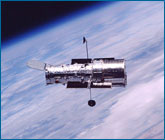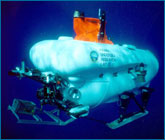We typically think of observations as having been seen "with our own eyes," but in science, observations can take many forms. Of course, we can make observations directly by seeing, feeling, hearing, and smelling, but we can also extend and refine our basic senses with tools: thermometers, microscopes, telescopes, radar, radiation sensors, X-ray crystallography, mass spectroscopy, etc. And these tools do a better job of observing than we can! Further, humans cannot directly sense many of the phenomena that science investigates (no amount of staring at this computer screen will ever let you see the atoms that make it up or the UV radiation that it emits), and in such cases, we must rely on indirect observations facilitated by tools. Through these tools, we can make many more observations much more precisely than those our basic senses are equipped to handle.



Observations yield what scientists call data. Whether the observation is an experimental result, radiation measurements taken from an orbiting satellite, an infrared recording of a volcanic eruption, or just noticing that a certain bird species always thumps the ground with its foot while foraging - they're all data. Scientists analyze and interpret data in order to figure out how those data inform their hypotheses and theories. Do they support one idea over others, help refute an idea, or suggest an entirely new explanation? Though data may seem complex and be represented by detailed graphs or complex statistical analyses, it's important to remember that, at the most basic level, they are simply observations.
Observations inspire, lend support to, and help refute scientific hypotheses and theories. However, theories and hypotheses (the fundamental structures of scientific knowledge) cannot be directly read off of nature. A falling ball (no matter how detailed our observations of it may be) does not directly tell us how gravity works, and collecting observations of all the different finch species of the Galapagos Islands does not directly tell us how their beaks evolved. Scientific knowledge is built as people come up with hypotheses and theories, repeatedly test them against observations of the natural world, and continue to refine those explanations based on new ideas and observations. Observation is essential to the process of science, but it is only half the picture.